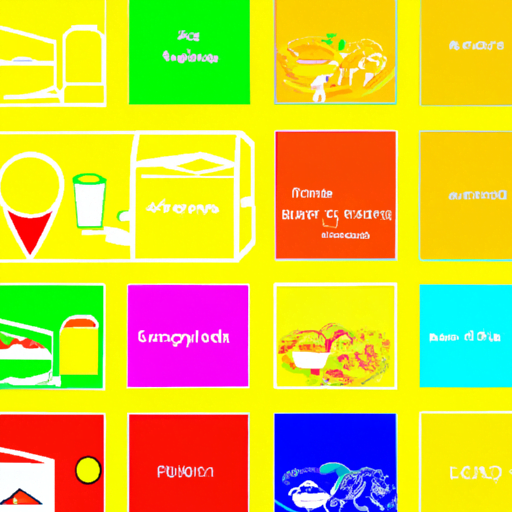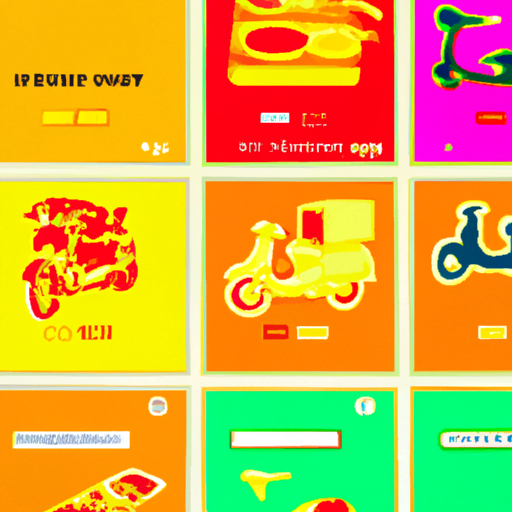
-
Table of Contents
- Interface Design for Food Delivery Platforms
- The Importance of Interface Design
- Key Elements of Interface Design for Food Delivery Platforms
- 1. Intuitive Navigation
- 2. Seamless Ordering Process
- 3. Visual Appeal
- 4. Personalization and Recommendations
- 5. Easy Payment and Checkout
- Case Study: Uber Eats
- Intuitive Navigation:
- Seamless Ordering Process:
- Visual Appeal:
- Personalization and Recommendations:
- Easy Payment and Checkout:
- Conclusion
Interface Design for Food Delivery Platforms

Food delivery platforms have become increasingly popular in recent years, providing a convenient way for consumers to order food from their favorite restaurants and have it delivered right to their doorstep. As the demand for these services continues to grow, it is crucial for food delivery platforms to have a well-designed interface that enhances the user experience and encourages repeat usage. In this article, we will explore the key elements of interface design for food delivery platforms and discuss how they can contribute to the success of these platforms.
The Importance of Interface Design
Interface design plays a crucial role in the success of any digital platform, and food delivery platforms are no exception. A well-designed interface can make the ordering process seamless and enjoyable for users, leading to increased customer satisfaction and loyalty. On the other hand, a poorly designed interface can frustrate users and drive them away from the platform.
According to a study conducted by the Nielsen Norman Group, users form an opinion about a website or app within the first 50 milliseconds of their visit. This means that the initial impression of a food delivery platform’s interface is crucial in capturing the user’s attention and convincing them to stay and explore further.
Key Elements of Interface Design for Food Delivery Platforms
When designing the interface for a food delivery platform, there are several key elements that should be considered to ensure a positive user experience. Let’s explore these elements in detail:
1. Intuitive Navigation
One of the most important aspects of interface design is intuitive navigation. Users should be able to easily find what they are looking for and navigate through the platform without confusion. This can be achieved through clear and consistent labeling, logical grouping of menu items, and the use of familiar icons and symbols.
For example, food delivery platforms often have a search bar prominently displayed at the top of the interface, allowing users to quickly search for specific restaurants or dishes. Additionally, a well-designed navigation menu can provide easy access to different sections of the platform, such as the user’s account settings, order history, and customer support.
2. Seamless Ordering Process
The ordering process should be as seamless as possible to minimize friction and encourage users to complete their orders. This can be achieved through a step-by-step approach, where users are guided through each stage of the ordering process.
For example, when a user selects a restaurant, the interface should display the menu in a clear and organized manner, allowing users to easily browse through the available dishes. Users should be able to customize their orders, select the desired quantity, and add special instructions if needed.
Furthermore, the interface should provide real-time updates on the status of the order, such as the estimated delivery time and the progress of the preparation and delivery process. This helps to manage user expectations and provides transparency, which is crucial for building trust with the users.
3. Visual Appeal
The visual appeal of a food delivery platform’s interface is important in capturing the user’s attention and creating a positive impression. The use of high-quality images of food can entice users and make them more likely to explore the available options.
Additionally, the overall design of the interface should be visually appealing and consistent with the brand identity of the platform. This can be achieved through the use of appropriate colors, fonts, and graphics that reflect the platform’s personality and target audience.
4. Personalization and Recommendations
Personalization is a key trend in interface design, and food delivery platforms can leverage this to enhance the user experience. By collecting data on user preferences and past orders, platforms can provide personalized recommendations and suggestions.
For example, a food delivery platform can use machine learning algorithms to analyze user behavior and recommend restaurants or dishes that are likely to be of interest to the user. This not only saves users time in searching for options but also enhances their overall experience by providing relevant and tailored recommendations.
5. Easy Payment and Checkout
The payment and checkout process should be simple and secure to ensure a smooth user experience. Users should be able to easily add items to their cart, review their order, and proceed to payment without any obstacles.
Food delivery platforms should offer a variety of payment options to cater to different user preferences. This can include credit/debit card payments, digital wallets, and even cash on delivery. The interface should clearly display the available payment options and guide users through the payment process, ensuring that their personal and financial information is protected.
Case Study: Uber Eats
Uber Eats is one of the leading food delivery platforms globally, known for its user-friendly interface and seamless ordering process. Let’s take a closer look at how Uber Eats incorporates the key elements of interface design:
Intuitive Navigation:
Uber Eats has a simple and intuitive navigation menu, allowing users to easily switch between different sections of the platform, such as “Home,” “Search,” “Orders,” and “Account.” The search bar is prominently displayed at the top, enabling users to quickly find specific restaurants or dishes.
Seamless Ordering Process:
When a user selects a restaurant, Uber Eats displays the menu in a clear and organized manner, with options to customize orders and add special instructions. The interface provides real-time updates on the status of the order, including the estimated delivery time and the progress of the preparation and delivery process.
Visual Appeal:
Uber Eats uses high-quality images of food to entice users and make them more likely to explore the available options. The overall design of the interface is visually appealing, with a clean and modern aesthetic that aligns with the Uber brand.
Personalization and Recommendations:
Uber Eats leverages personalization by analyzing user preferences and past orders to provide personalized recommendations. The platform suggests restaurants and dishes that are likely to be of interest to the user, based on their previous orders and browsing history.
Easy Payment and Checkout:
Uber Eats offers a variety of payment options, including credit/debit cards and digital wallets. The payment process is straightforward, with clear instructions and secure handling of personal and financial information.
Conclusion
Interface design plays a crucial role in the success of food delivery platforms. By focusing on intuitive navigation, seamless ordering processes, visual appeal, personalization, and easy payment and checkout, platforms can enhance the user experience and encourage repeat usage.
Food delivery platforms like Uber Eats have successfully implemented these key elements, resulting in a user-friendly interface that attracts and retains users. As the demand for food delivery services continues to grow, it is essential for platforms to prioritize interface design to stay competitive in the market.
By investing in interface design and continuously improving the user experience, food delivery platforms can build strong relationships with their users and establish themselves
